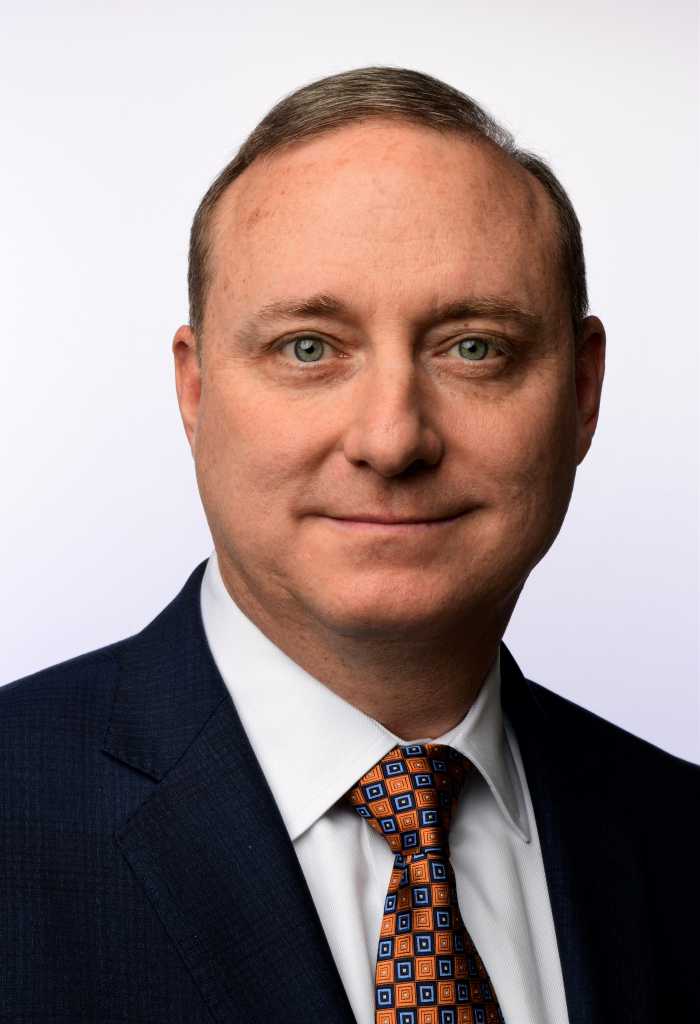📚 CIO 100 US: 7 award-winning financial services and insurance IT projects
💡 Newskategorie: IT Security Nachrichten
🔗 Quelle: cio.com
The financial services and insurance industries often claim the title of digital leaders, thanks to their use of technology to create new products and services, and to deliver those offerings in frictionless, seamless ways.
This emphasis on digital transformation was underscored in a recent Gartner study that found that, for the first time ever, technology as a strategic financial services business priority has surpassed growth among CEOs and senior business executives surveyed.
“This dramatic shift signals the extent to which executives view the role of digital, where for many it is now a critical means to an end,” says Jasleen Sindhu, a senior director of research within Gartner’s Financial Services Practice.
While other industries remain on par with the financial sector in terms of their degree of digitalization, the financial services industry shows notable maturity when it comes to digital customer interactions where it “stands out as being better than most other industries,” Sindhu says.
Organizations leading the charge in the financial services and insurance industries exhibit certain characteristics in their approach to IT, helping them to outperform the competition, she says. “These characteristics — composable thinking, business architecture, and composable technologies — … together allow firms to quickly adapt and respond to opportunities and threats.”
Sindhu adds: “The focus for these firms is no longer about ‘having a good digital strategy’ but it is about ‘having a business strategy that creates value and differentiates, enabled by digital.’”
CIO.com recently recognized seven companies in the financial services and insurance space whose use of technology stands out as part of the CIO 100 Awards for IT Innovation and Leadership. Here is a look at their award-winning work.
Aflac virtualizes the customer enrollment experience

Rich Gilbert, chief digital information officer, Aflac
Aflac
Organization: Aflac
Project: Reimagining the Enrollment Experience
IT Leader: Rich Gilbert, chief digital information officer
When the pandemic hit in 2020, Aflac quickly realized its reliance on in-person meetings to sell its products would not work in a world seeking to limit contact. So, it reimagined its business model, tasking teams to develop new digital experiences.
Within months, Aflac IT rolled out new end-to-end digital capabilities that enabled the insurer’s agents to inform, educate, book, and enroll customers on any device from anywhere.
“Without this initiative, the impact of the pandemic could have been much more severe given Aflac’s business model is centered around a face-to-face interaction. Thanks to the hard work of the team, we were able to understand key moments of our agent’s and customer’s journey to reimagine their ‘jobs to be done’ in a new, digitally enabled way. What we learned was that when you involve your end-users in the process, seek to understand rather than respond, and bring everyone to the table without silos, you can deliver great digital products with significant impact,” says Rich Gilbert, chief digital information officer.
Hatch, Aflac’s US innovation lab, took the lead, pulling together leaders and teams to develop and implement a virtual enrollment experience. The teams took a human-centered design approach, engaging in rapid experimentation while validating the proposed solutions. The work resulted in a collection of capabilities that were then distributed across agile teams to advance.
Fully deployed by the end of 2020, those capabilities transformed processes throughout the enrollment lifecycle. For example, agents who once relied on physical materials such as product brochures gained tools to generate on-brand, compliance-approved sites at scale in minutes. Customers gained personalized sites where they can view their specific product offerings, watch informational videos, view dates for enrollment, and book time directly with their agent.
Additionally, Hatch accelerated a new AI-driven decision support tool that recommends products to customers based on past purchases by customers with similar profiles. The team also enabled digital enrollment with features such as e-signature.
To deliver these capabilities, Hatch worked with the other teams to overcome multiple challenges, such as integrating legacy systems, ensuring legal and regulatory compliance, and contending with resource fluctuations as a result of COVID.
Ally optimizes customer savings experience

Sathish Muthukrishnan, chief information, data, and digital officer, Ally Financial
Ally Financial
Organization: Ally Financial
Project: Smart Savings: Bucket Goals
IT Leader: Sathish Muthukrishnan, chief information, data, and digital officer
Ally Financial set out to create a suite of financial tools to help its customers overcome their struggles to save money. Ally’s Smart Savings Tools, first launched in February 2020, help customers maximize savings while minimizing the time and effort required to do so.
One tool within the suite, Bucket Goals, enables customers to set funding and timeframe targets for their savings goals, and to monitor their progress, providing features to help them, such as customized prompts and automated savings.
Ally’s design approach started with TM Studio, its concept testing and innovation team. The team engaged consumers, asking about their savings objectives and challenges, and then used that information to identify savings obstacles as well as ways to overcome them.
Meanwhile, using human-centric design principles, its consumer research and usability teams worked with engineering to understand and implement the right customer experience.
Ally built the front-end UI with React and chose Ember to power a dynamic digital experience. The tool is API-driven and uses real-time transactional data to enable a personalized experience. It also uses native mobile languages Swift (iOS) and Kotlin (Android) to optimize mobile app performance.
Customers who have used Ally’s Smart Savings Tools have saved twice as much as those who haven’t, according to Ally data, which also shows that more than 2 million “bucket goals” have been created.
“In many ways this project was a springboard for Ally,” says Sathish Muthukrishnan, chief information, data, and digital officer. “We created a unique digital experience framework and model — a combo of human-centered design thinking, digital-native experience development, and scalable technologies — that allows us to quickly identify consumer pain points and develop and refine solutions. This listen-first and design-second approach enables us to fully leverage our unique hybrid persona of fintech and established financial institution and create a transformational experience for the consumer.”
City National Bank invests in data-driven customer relationships
Organization: City National Bank
Project: Innovative Data Grouping Approach to Optimize Customer Relationship Value
IT Leader: Ariel Carrion, CIO
At City National Bank (CNB), customer relationship management needed an overhaul. The bank’s customers were assigned relationship managers based on their accounts’ point of entry or branch origin. As a result, large net-worth customers did not always get paired with the most suitable relationship manager, and customers with multiple accounts were assigned numerous relationship managers to help serve their needs.
To optimize service, balance resource workloads, and maximize revenue, CNB wanted to group customer household and organizational relationships, identify high-value relationships, and more effectively assign relationship managers best suited to develop and grow those accounts. To do so, the bank set out to implement a data-grouping solution to handle the complexities of accounts without negatively impacting customers. Partnering with consulting firm Protiviti, CNB implement a graph data structure and developed algorithms to uncover nested customer relationships, gauge the size of each banking relationship, and optimize resource assignment.
As part of this project, the technology team established consistent logic rules for account linkages; defined new policies and processes to assign relationship managers; and continuously refined the criteria based on new insights gleaned from the advanced analytics. It also implemented a distributed data platform (Databricks) on Azure to process enormous amounts of customer data on a daily basis.
The technology facilitated data-based decisions for resource assignment, thereby improving and simplifying CNB’s relationship creation and maintenance process. It also enabled CNB to measure the size of each banking relationship, automate nearly all client relationship assignments, and drive other improvements in its customer relationship function.
Global Payments automates code security scanning
Organization: Global Payments
Project: Macroscope
IT Leader: Guido Sacchi, executive vice president and CIO
Global Payments sought to create a more efficient, scalable process for securing the code it developed, while doing more to cut application security risk. So, the application security team developed Macroscope, an automated code scanning tool.
Macroscope scans all code in all repositories, including all branches. It can scan many different programming languages, code at check-in, and infrastructure as code. It also features centralized vulnerability management, email notifications for new findings, vulnerability aging reports, false positive tracking, and remediation metrics.
Prior to Macroscope, Global Payments application teams had to manually request scans, which were conducted independently, a process that yielded multiple reports that were not reconciled for false positives and duplicate results, leaving developers to shift through them. The volume of scan requests annually resulted in thousands of reports, which application teams then had to review. Moreover, teams usually requested scans late in the development process, with the remediation process making it difficult for development teams to keep on track with their release schedules.
Now with Macroscope, application security is better integrated into the software development lifecycle, including Global Payments’ continuous integration/continuous delivery (CI/CD) pipelines. Macroscope also reduces friction in finding security vulnerabilities by enabling developers to fix these vulnerabilities during their normal software development lifecycle (SDLC) process. The project has also delivered other business benefits, such as reducing the time developers spend fixing security vulnerabilities in code and improving speed to market.
Hastings Mutual turns to data to tame weather impacts on policies

Eshwar Pastapur, vice president and CIO, Hastings Mutual Insurance Co.
Hastings Mutual Insurance Co.
Organization: Hastings Mutual Insurance Co.
Project: Geospatial Intelligence
IT Leader: Eshwar Pastapur, vice president and CIO
The CIO and senior vice president of operations at Hastings Mutual Insurance had a very specific objective: To use the company’s data visualization tools to provide weather-related policy exposures. This would bring in-house and improve a function the company was getting as a fee-based service, with information provided only monthly via spreadsheet.
Developing such capabilities would enable Hastings Mutual to more accurately predict the number of claims in each of its coverage areas. It would also help forecast the necessary claim support levels and improve fraud detection and the accuracy of loss reporting.
The project relies on open-source weather data from the National Oceanic and Atmospheric Administration and Iowa State University, overlaying company policies and delivering greater claim predictability through the ability to drill down at the policy level.
To deliver high-performance rendering of data, the team used single-page applications (SPAs) on the front end. This not only allows for easy delivery of information via web browsers but also helps with performance as pages are rendered directly on client devices. The team also used elastic techniques to expedite searching through large amounts of business data.
Geographic information is provided using PostGIS, a relational database server optimized for geocoded data. Sisense business intelligence software provides the interface to present the resulting screens and support user interaction. The resulting tool, with self-service visualization and analytics, allows for quick access and easy manipulation of the data by users. Moreover, it enables Hastings Mutual to add more capabilities in the future, such as incorporating AI for underwriting decision-making.
Implemented in under six months and fully deployed in 2021, the in-house geospatial solution already has reduced claim-related and other costs and improved relevancy and timely decision-making.
“This started as an expense-saving project, but now it has become a powerful competitive advantage for us,” says Vice President and CIO Eshwar Pastapur, explaining that IT has and can continue to layer more capabilities to the tool as business needs arise.
TIAA modernizes with microservices

Ajit Naidu, executive vice president and acting head of CS&T, TIAA
TIAA
Organization: TIAA
Project: Remittance Modernization
IT Leader: Ajit Naidu, executive vice president and acting head of CS&T
As TIAA’s client base and demand for services grew, its remittance system wasn’t keeping up, resulting in a scaling issue that impacted customers and left TIAA developers propping up the technology to ensure the company adhered to its contractual service-level agreements.
The company’s concerns over such issues gave rise to the Remittance Platform Modernization project, which was launched to develop an application that performed 100 times better with increased stability and scalability, as well as support for accelerated feature delivery, a seamless client experience, and a vastly improved user interface.
TIAA used domain-driven design to develop the solution and associated services, establishing an internal community-managed framework for building microservices, which are the core of TIAA’s new platform architecture. The company also deployed a container-first operating model that delivers all applications and services within a containerized environment for scalability and flexibility.
“The Remittance modernization effort was the refactoring and re-engineering of a complex, monolithic and legacy platform,” says Ajit Naidu, executive vice president and acting head of CS&T. “This involved creating a component- and services-based architecture enabling the dynamic assembly of solutions and automated hierarchical unit testing. All the services created are built on a framework that optimizes distributed processing of data and files with caching capabilities. Also implemented the capability to replay/unwind transactions to easily fix data and/or processing errors.”
The results: a 220% improvement in system performance and a 72% reduction in data movement resulting in significant reduction in failure points, with 98% testing now automated.
“In addition, this led to more than 60% reduction in time to market with over 70% reduction in operational costs,” Naidu adds.
Zenus Bank goes mobile for global business model

Pedro Martinez, CIO, Zenus Bank
Zenus Bank
Organization: Zenus Bank
Project: Zenus Bank app
IT Leader: Pedro Martinez, CIO
Zenus, a newly chartered digital bank with a global business model, is offering individuals and businesses around the world the ability to open a US bank account without having to be a US citizen or resident. It offers that capability through its native iOS and Android apps.
But developing the Zenus app presented multiple unique challenges for the new bank. Teams had to ensure the app meets all regulatory requirements while also performing to technological standards to ensure a user-friendly omnichannel banking experience to clients all over the world. They also had to successfully onboard vendors to take on their subset of the project and manage complex process integrations.
“The US banking industry has many regulatory and licensing obligations. To ensure that we met all of them, we needed to have an IT infrastructure that was secure, stable, and fast. We also wanted to take a modular approach to banking, which requires many integrations. We found it essential to be working alongside software and implementation partners who are customer-centric, adhere to the latest standards, and can picture one unified front and backend platform,” says CIO Pedro Martinez. “Through our partnerships, with the likes of Microsoft, we’re achieving operational excellence, so our end users have a positive banking experience.”
Using agile methodologies, developers created a patent-pending omnichannel remote onboarding process and a patent-pending proprietary customer risk score. It also delivers real-time cloud-hosted fraud management on all channels.
The technology has fueled the bank’s business objectives, enabling Zenus to achieve cross-border American Visa card issuance and giving Zenus the ability to offer instant and unlimited cross-border USD transfers. To date, approximately 80% of international applicants automatically are approved by the bank’s patent-pending banking system in less than 10 minutes.
The Zenus App is live in Apple and Google Play stores in more than 180 countries.


 800+ IT
News
als RSS Feed abonnieren
800+ IT
News
als RSS Feed abonnieren